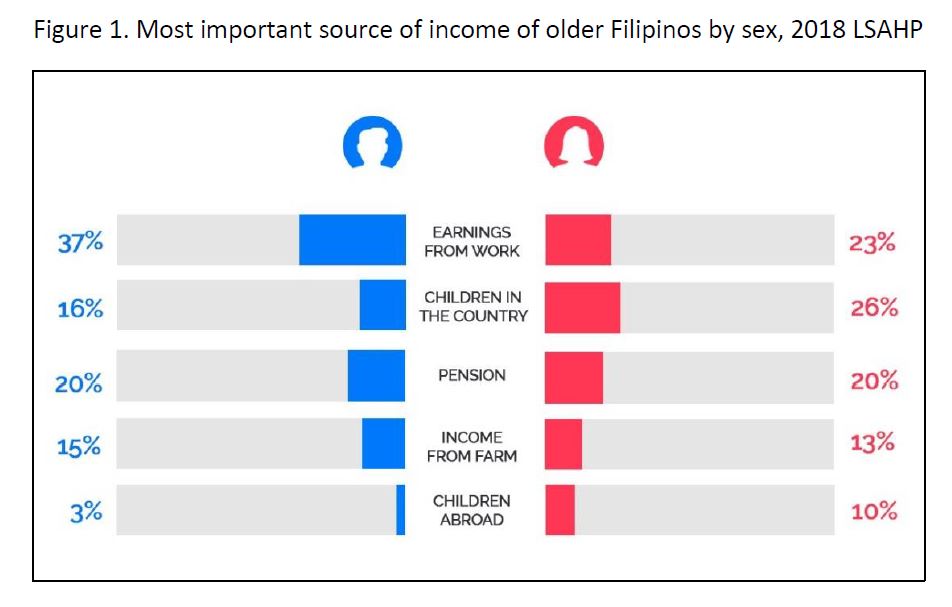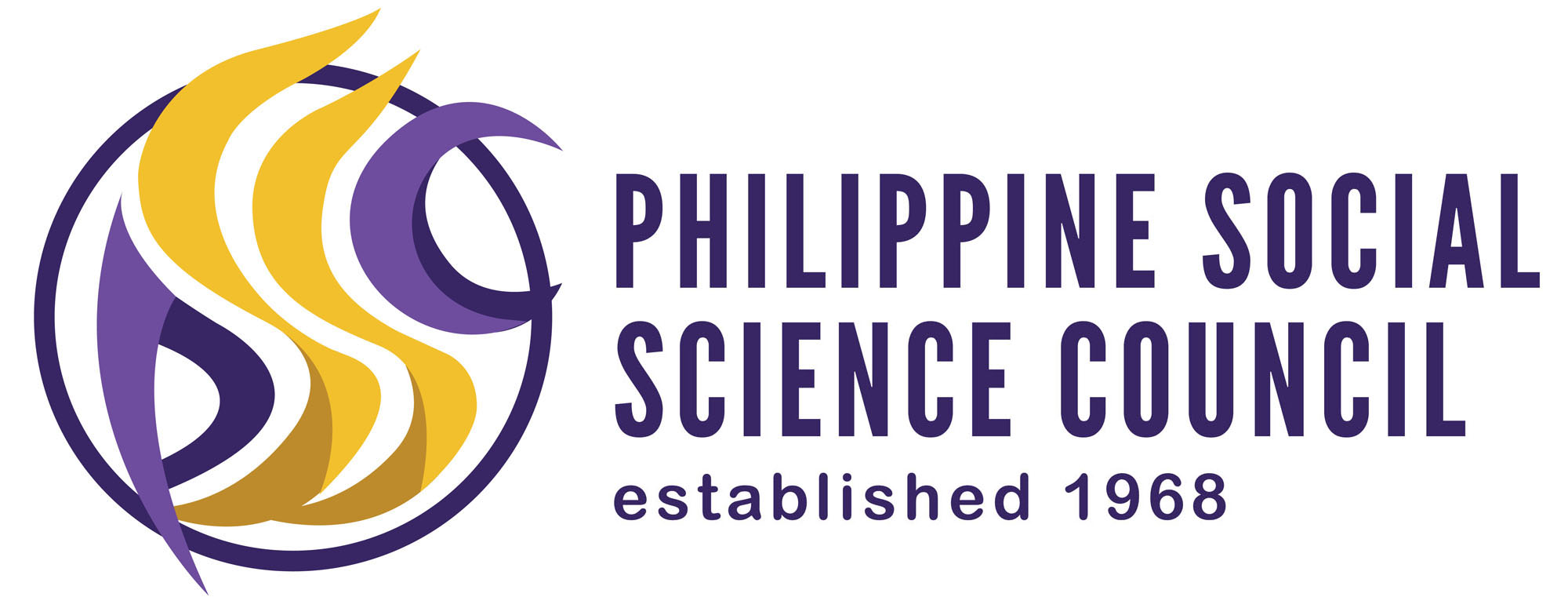
COVID-19 and the Economic Vulnerability of Older Filipinos
The University of the Philippines Population Institute (UPPI) in collaboration with the Demographic Research and Development Foundation (DRDF) are sharing results of their demographic studies to provide the Philippine context on the possible effects of the coronavirus disease (COVID-19) pandemic. In both the UPPI and DRDF websites, we are publishing a series of research briefs focusing on various aspects of Filipino lives that are affected by COVID-19, in both the short and long terms.
Download PDF here.
Our first Research Brief discussed the increased vulnerability of older Filipinos to COVID-19 because of their age and comorbidities. In this analysis, we move beyond health and mortality and assess older people’s economic vulnerability as a way of drawing attention to the conditions and needs of older Filipinos at this time. The analysis hopes to help guide the government in providing more informed interventions to ensure the well-being of the estimated 9.5 million older Filipinos during the COVID-19 public health crisis.
While it is too soon to assess the economic implications of the pandemic on the older population, we can take a hint by assessing their current economic status, as indicated by their reported income levels, sources of income and economic support and their self-assessed economic wellbeing. We also take note of gender differences, if any.
Results from the 2018 Longitudinal Study of Ageing and Health in the Philippines (LSAHP) 1, the first longitudinal, nationally representative study of older Filipinos aged 60 and over living in community dwellings, highlight the economic disadvantage many of them are living under. The median reported individual or conjugal income is PhP 3,000 per month and 46% are living below the poverty line at the time of the survey in 2018. Not surprisingly, 57% of older Filipinos reported they have some or considerable difficulty in meeting household expenses.
In addition, many older people have fragile and informal sources of economic support. Women for example, report financial transfers from children as their most important source of economic support: 10% from children abroad and 26% from children within the country (Figure 1). Earnings from work (23%) comes second while pension is the third most important income source (20%).

Older men show a different picture. More than half are currently working (57% as compared to 39% among the women) and report income from work as their most important source of financial sustenance (37%). This is followed by pension (20%), financial transfer from children within the country (16%) and income from farm (15%).
The global reach of the COVID-19 pandemic has affected a substantial number of Filipinos overseas. While data are still limited at the moment, measures being implemented in various parts of the world such as lockdowns and social or physical distancing, and the general slowing down of economic activity have led to displacements of Filipino overseas workers. In fact, the Department of Labor and Employment (DOLE) has offered cash aid to jobless overseas Filipino workers (OFWs) affected by the COVID-19 pandemic. This worldwide development affects older Filipinos who rely on their children working abroad for their sustenance.
Moreover, the coronavirus pandemic has also created major work disruptions in Luzon. As borne out by the 2018 LSAHP data, a bigger percentage of older people rely on the financial support of their children within the country. The enhanced community quarantine implemented first in Metro Manila, and later in Luzon has greatly affected mobility and access to employment, particularly, of workers from the informal sector. Thus, there might be a decline in both local and international remittances in the next few months because of the anticipated economic effects of COVID-19 on Filipino workers.
The older population by virtue of their age are expected to have retired from work and at least those who worked in the formal sector should be receiving a pension after retirement. But pension received by older Filipinos does not seem to add up to much. While 42% receive a pension, only half of them consider it their most important source of income with comparable levels for both men and women.
Based on the 2018 LSAHP data, close to half of older people (47%) are recipients of the PhP 500 monthly social pension as part of the Social Pension Program of the government for indigent older Filipinos. Another 13% older Filipinos also reported that their households are recipients of the Pantawid Pamilyang Pilipino Program (4Ps), the government’s Conditional Cash Transfer (CCT) program. With the enhanced community quarantine, payments for social pension was suspended to minimize outside exposure of older people. However, the Department of Social Welfare and Development (DSWD) has assured the continuation of the social amelioration for the severely affected populations including senior citizens during the quarantine period. This is important given that there is evidence of a hunger problem experienced by older Filipinos. In 2018, 18% of older Filipinos reported that their household experienced severe hunger i.e., experienced hunger often or always in the past three months.
All these call attention to the condition of older Filipinos who are already economically vulnerable under normal circumstances and whose conditions are expected to worsen during the COVID-19 pandemic. For one, lockdowns mean that older people will not be able to go to work outside the home. This has effect on older men who depend on their employment and work in the farm as their primary sources of income. With the halt of employment of many Filipinos, including the OFWs, or as their earning capacity declines, we can expect the effects to cascade to older Filipinos, reliant on the economic activities of their children for support. As the country anticipates the prolonged impact of the COVID-19 pandemic, the conditions of older Filipinos need special consideration, not just due to the health-related risk but also from the point of view of economic vulnerability. The government should not forget households with economically disadvantaged older persons when thinking of assistance to families and households. Relief goods and food packs for instance, should also consider older person’s needs.
1 The 2018 LSAHP Report may be accessed at: http://www.eria.org/publications/ageing-and-health-in-the-philippines/
This research brief was prepared by Grace T. Cruz, Elma P. Laguna, Maria Midea M. Kabamalan, Maria Paz N. Marquez, Nimfa B. Ogena, Maria Karlene Shawn I. Cabaraban, Mark Ryan B. Paguirigan.
Suggested citation: University of the Philippines Population Institute (UPPI) and Demographic Research and Development Foundation, Inc. (DRDF). (2020, March). COVID-19 and the Economic Vulnerability of Older Filipinos (UPPI/DRDF Research Brief No. 2). Retrieved from https://www.uppi.upd.edu.ph/sites/default/files/pdf/COVID-19-Research-Brief-02.pdf.
